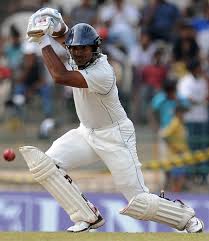I had always been interested in investing in the stock market but neither had the means nor the guts to invest. Then I started working and the first thing I did after I received my first pay cheque was to open a trading/demat account. The stock markets have been kind to me and I have been able to create some wealth with higher than expected returns, especially considering the rate of return at banks. I am sure there are a lot of you like me who want to invest in the stock markets but are not sure how to keep your investment safe. I have tried to summarize my learnings from 11 years of investing. Some of this might work for you and some might not. Take what works for and leave the rest behind. Even better, share your experiences if you have been investing as well. So, let’s get started. Shall we?
My first learning was to distinguish between ‘Trading’ and ‘Investing’. Trading involves buying and selling shares frequently (holding the shares for a very few days, usually just about a week) while Investing is for long term with a time frame of at least a year. Trading involves bigger risk while investing requires a lot of hard work. I had to decide what I wanted to be - a trader or an investor? I chose the latter and focused my entire energy on investing.
Once I was clear on wanting to invest rather than trade, the next thing I decided on was the approach I was going to take. Investing in the stock markets is not a joke. So, I chose to do my research and analysis individually, before deciding on a stock to invest in. I made it very clear to myself that I was not going to ‘Follow the herd’. This was my second learning. I didn’t want to invest in a particular stock just because everybody else was investing in it. It helped me immensely as I steered clear of stocks that I was not comfortable with.
The third thing I learnt was to follow a very disciplined approach to investments. I spend hours doing research on companies that I want to invest in - looking for news, reviewing the financials of a company and deciding on what price to buy it. Also, this taught me to be patient, especially when, at times, the stocks I had invested in weren’t doing well. I was confident of my research and bid my time before making a decision.
And this is my next learning - I never try to ‘time the market’ which in other words means that I never tried to chase the top or bottom price of a stock. I set my personal targets for returns and sell when I achieve those targets. This also helps me set the ‘right expectations’ on returns while ensuring that I don’t get greedy. The biggest challenge with this is to not feel the guilt when tock shoots through the roof after one has sold it. It has happened to me and I have (surprisingly) been quite content.
Another thing I learnt was not to put ‘all my eggs in one basket’ and hence, I diversified my portfolio. The diversification is possible only with more research but it helps me minimize my losses and risks. If one industry isn’t doing very well, it may be compensated by another that is doing extremely well. This approach also helps me invest in many stocks rather than just a few.
Probably the most important lesson is that I invest only my ‘spare or surplus’ money. My objective is wealth creation and I want to do it with the extra money I have rather than put all the money I have in the markets. I want my investment journey to be a learning one for me, but if I invest all that I have and fail at some point,, I would be loathe to try again.
Finally, I try to monitor my portfolio regularly, at least once a day. There are definitely days when I’m unable to lookat it but then that happens quite rarely. This keeps me on my toes and reminds me that I should keep an eye for any kind of news that might affect my portfolio.
It’s been over 11 years now since I made my first investment in 2004 and it’s been an eventful journey thus far. There have been a lot of ups and downs, trials and tribulations, wins and losses. But my zest to invest has just grown exponentially in this time. I learn every day and I hope to do so for the rest of my life. Have you invested? What have you learnt? Do leave a comment to share!




